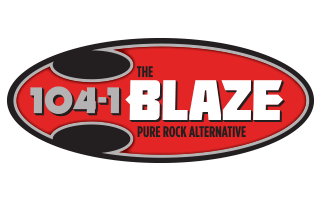UNMC Announces Arrival of ‘Most Advanced’ Scanner in Nebraska

A new arrival has joined the University of Nebraska Medical Center, and it will allow UNMC to compete with the elite research institutions in the country in better understanding the complexities of the brain.
The new arrival comes in the form of the most advanced magnetic resonance imaging (MRI) scanner in Nebraska – a state-of-the-art, 28,000-pound unit that will provide the highest resolution imaging available while cutting the time the subject has to be in the MRI in half.
“This is truly a game changer,” said Chancellor Jeffrey P. Gold, M.D. “Having an MRI that is dedicated to research is the missing piece of the puzzle that we needed to take our research enterprise to the next level.
“It will not only have a huge impact on research, but it also will enhance our education and clinical care. Ultimately, it will help us unlock the mysteries of the brain and hopefully provide some answers to complex neurological problems such as Alzheimer’s disease and Parkinson’s disease, which presently don’t have any real solutions.”
The unit – the Siemens Prisma MRI scanner – cost $2.5 million with an additional expense of about $1.5 million to install it. It is conveniently located in the heart of the UNMC/Nebraska Medicine campus on the first floor of the Hixson-Lied Center, which connects the Clarkson and University hospital towers.
Primary funding – about $3 million – was provided by the UNMC College of Medicine under the leadership of Dean Bradley Britigan, M.D., with the remaining $1 million coming from a National Institutes of Health research grant.
In 2016, UNMC landed the largest research grant in its history, the Great Plains IDeA-Clinical and Translational Research award – a five-year, nearly $20 million grant through the Institutional Development Award (IDeA) program and the NIH’s National Institute of General Medical Studies.
Matthew Rizzo, M.D., professor and chair of the UNMC Department of Neurological Sciences, is the principal investigator on the grant, which supports clinical and translational research (CTR) among a collaboration of nine institutions in four states – Nebraska, North Dakota, South Dakota and Kansas.
Initially, the research-dedicated MRI will be used by UNMC researchers in neurological sciences, psychiatry, cardiology and neurosurgery, he said. But, it also will be available for investigators who are part of the four-state collaborative grant as well as any other researchers who can benefit from it.
Installation of the MRI was completed on Dec. 3, and research studies are already underway.
“This is a key addition to UNMC’s research toolbox,” Dr. Rizzo said. “It greatly enhances our already outstanding research environment, raises our national profile in the neurosciences, and improves our ability to win extramural research awards. It further distinguishes UNMC as the regional leader in brain imaging, while rallying our strong local neuroscience community around an essential core resource.”
In fiscal year 2018, UNMC researchers brought in $135.6 million in research funding, an increase of 15.8 percent from the $117 million garnered the previous year. Thanks to the research-dedicated MRI, those numbers should continue to grow, said Jennifer Larsen, M.D., UNMC vice chancellor for research.
“Having this instrument will not only speed up our ability to conduct this type of research, but it also will allow us to participate in national multicenter trials focused on brain research,” she said. “Neuroimaging is critical to understanding how the brain works or is impacted. This MRI will allow us to explore brain development and brain deterioration. It will help us understand how cancers develop or move to the brain and determine which medications are most effective in treating certain neurological conditions.”
Dr. Larsen praised the College of Medicine for providing the majority of funding needed to purchase the MRI. She also noted that obtaining the research-dedicated MRI was a collaborative effort bringing together the College of Medicine, the IDeA-CTR, Nebraska Medicine, the office of the vice chancellor for research, the assistant vice chancellor for business and finance, as well as Tony Wilson, Ph.D., the scientific director for the project.
She specifically cited Dr. Rizzo and Howard Fox, M.D., Ph.D., associate dean for research in the College of Medicine, for their work with the IDeA-CTR grant and others who were instrumental in the collaboration including – Dr. Wilson; William Lawlor, UNMC’s assistant vice chancellor for business and finance; Cory Shaw, executive vice president/chief operating officer for Nebraska Medicine; and Pamela Flax-Laws, chief scientific administrator, neurological sciences.
Dr. Wilson, director of the Magnetoencephalography Laboratory at UNMC/Nebraska Medicine, will oversee the MRI. As one of UNMC’s top funded researchers, Dr. Wilson’s team currently has five active NIH awards, a National Science Foundation grant and an American Heart Association grant totaling more than $23 million in federal funding.
“This advanced imaging tool will allow investigators from around the region to examine the precise structure, function, and chemical composition of all parts of the body, but especially the brain,” Dr. Wilson said. “The brain is considered the final frontier in research – we know far less about the brain compared to the heart and other organs. This scanner will enable investigators to begin to unravel how diseases such as Alzheimer’s disease, Parkinson’s disease and multiple sclerosis cause aberrations in the brain that severely affect behavior and quality of life.
“The MRI also will enable us to identify how brain activity changes when people perform mental tasks that require our attention, decision-making, and memory capacities. These and other critical abilities make us human, and understanding how these are implemented in the brain will have a major impact on future health care. I think it is fair to say that we are entering a new era for brain research in Nebraska.”
READ MORE: Lawmakers Kickoff 90-Day Session Wednesday








